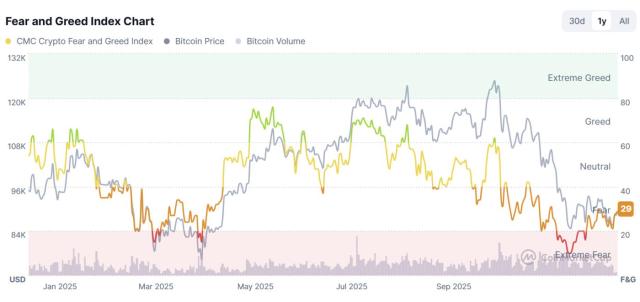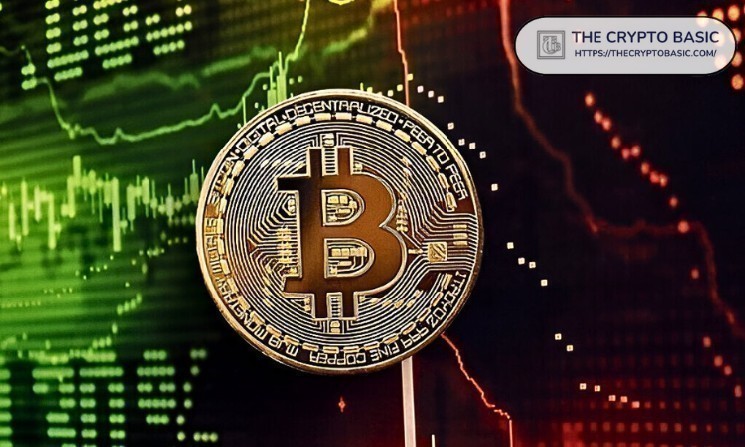Some asset prices still have 2-5 times or even higher upside potential before reaching their peak.
Author: Chris Burnisks, Placeholder Partner
Compiled by: 1912212.eth, Foresight News
If your friends contact you and ask questions about Bitcoin, Ethereum, and other cryptocurrencies, it's not easy to guide them given the current market situation (BTC is close to $100,000). This is especially true when they are inexperienced rookie investors. Here are some lessons I've learned from over a decade of observation.
Make sure they take responsibility for their own actions. You may have more experience and knowledge, but that doesn't mean you're absolutely right. No one understands everything that's happening in this market. If someone claims to be an expert, they're definitely lying.
You can try to explain to them what stage of the market cycle we're in. In my view, we've been in the second year of this bull market cycle. (The bottom of the chart is November 2022)
Calculating from the bottom 2 years ago, BTC has risen over 6 times, ETH over 4 times, and SOL over 30 times.

The painful truth is that as token prices rise, people's attention will increasingly turn into purchasing power. So the more prices rise, the more people's attention will focus on the potential for further upside, but generally, the later we enter the "attention cycle", the less favorable our position.
So the best entry point is often when hardly anyone is paying attention, which was 2 years ago. What if they're eager to buy tokens even though the entry point isn't the best right now?
Keep it simple: Personally, if they're rookies, I'd be inclined to recommend holding a certain percentage of BTC, ETH and SOL (50/25/25%), with the other risks borne by them. At least if they mess up the "entry/exit", they can still maintain a certain amount of capital. If they choose small-cap coins, encourage them to learn and keep it under 10% of their total allocation to reduce risk.
Given the current entry prices, if they double their money, encourage them to take out their principal, which also ensures they lock in profits. After that, if their capital has tripled, they can cash out everything, or if they're willing to take more risk, cash out the 2x profits and keep the remaining 1x (cost basis), but try to make them understand the potential for crazy crashes during a bear market. (If they are die-hard Bitcoin supporters, they may never want to sell, which is fine, but they must be prepared to face difficulties at some point)
Selling during a bear market is driven by panic and fear, but it becomes relatively difficult to exit during a bull market, and sometimes if they feel they sold too early, they may resent you, but they will eventually thank you.
They also need to be careful, if they decide to realize their profits and then can't resist re-entering, reinvesting those profits, if the market continues to rise, it will become FOMO - this idea usually leads to adverse consequences.
Because if the market suddenly crashes, they may ultimately find that the taxes they need to pay on their realized gains are more than the final assets they have left (this often happens).

Every sale of a crypto asset is a taxable event, even if it's just exchanging one crypto asset for another. Once I start actually cashing out funds, I plan to park them in traditional finance (TradFi) principal-protected yield accounts for 12 to 18 months - high-yield crypto stablecoin accounts don't count as cash custody, as there is still crypto market risk, and the leverage accumulated in a bull market could wipe you out. First, I will settle my tax liabilities, and then I will start looking for new investment opportunities again, which usually happens when people lose their minds due to panic, or ideally, when market enthusiasm subsides, people become apathetic (this often happens more than 12 months after the market peaks).
Although ETFs and potential sovereign nation purchases may mean that Bitcoin (BTC) won't experience an overly brutal bear market in the future, every time a bull market arrives, people will find various reasons to justify it reaching absurd heights, or claim that a bear market won't happen.
"Supercycles" are without exception collective delusions.
I can see the reasons for the cycle repeating (peaking in Q4 2025) and the reasons for the cycle being extended and breaking the four-year pattern. Although we may see some consolidation after the new US president takes office, I don't believe the claims about the cycle shortening. This is just post-traumatic stress disorder (PTSD) from the bear market.
That said, structurally, anything that grows at 100x speed is prone to at least an 80-90% drawdown at some point - mainly because there are too many profit-takers.
If SOL reaches $800 in this cycle, it may drop to $80-160 in the future (e.g., 2027). So if someone buys in at $240 and holds firm, they will lose money in the next bear market. It's hard for people to realize this in the frenzy of a bull market, but since you've been through it, you can teach them now :)
Given the current prices (SOL has already risen over 30 times from the lows), no one can get obscenely rich or achieve crazy multiplier returns, but they will see others making a lot of money, so it's hard to resist the temptation - if you tell them not to buy and to wait because the "ultimate crash" will bring prices below current levels, they will feel pain, because depending on the asset, prices still have 2-5 times or even higher upside potential before reaching their peak, so everything is very unstable.
Finally, I want to further explain that many inexperienced investors think more in terms of dollars ($) than in terms of X (multipliers) or percentages (%). For example, if you say SOL could reach $1,000, they'll think, "Wow! That's an increase of $760 per SOL!" However, from $8 to $240, the value per SOL has only increased by $232.
But what they don't realize is that the 30x increase from $8 to $240 is much more significant than the 4x increase from there to $1,000. For investors, truly understanding this is very important.







